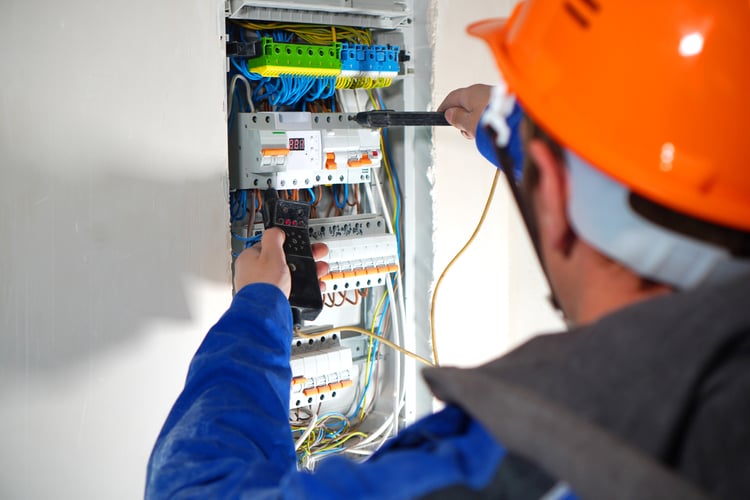Comprehensive Solutions from BRE Services for All Your Needs
Comprehensive Solutions from BRE Services for All Your Needs
Blog Article
The Ultimate Guide to Electric Setup: Tips and Strategies for a Safe and Efficient Home Circuitry System
In the realm of home maintenance, few elements are as critical yet frequently neglected as the electrical wiring system. By exploring the nuances of electric safety and security steps and energy-saving methods, this detailed overview will certainly lose light on the details of home wiring, equipping people to take fee of their family's electric facilities.
Recognizing Electrical Precaution
To guarantee the safety and security of both individuals and home, understanding and implementing appropriate electric security measures is extremely important in any type of home electrical wiring project. It is crucial to conduct a comprehensive assessment of the electric system prior to beginning any circuitry project to recognize potential dangers or concerns that need to be addressed.
In addition, utilizing the appropriate tools and tools is vital for keeping security during electric setups. Protected handwear covers, voltage testers, and safety eyeglasses are a few of the fundamental security gear that must be worn to avoid electrical shocks or accidents. It is likewise crucial to de-energize circuits prior to dealing with them and to label all circuits and breakers plainly to avoid confusion.

Essential Devices for Home Circuitry
Guaranteeing the correct application of electrical safety procedures in home electrical wiring jobs entails making use of a certain set of crucial tools made to facilitate the setup procedure properly and securely. Some of the trick devices required for home circuitry jobs consist of a voltage tester for checking live cables, cable strippers for removing insulation from cords, a cable cutter for precisely cutting wires to size, a screwdriver set for securing electric components, electric tape for insulation and safeguarding connections, a cord ripper for removing cable television sheathing, and a multimeter for measuring voltage, present, and resistance.
Step-by-Step Electric Setup Overview
Starting an electric installment job requires careful preparation and adherence to safety guidelines. Before beginning any kind of work, ensure you have an in-depth plan describing the layout of the electrical system, including the placement of outlets, buttons, and components. Think about the power needs of each tool to identify the ideal cord scale and breaker sizes.
The very first action in the installment process is to turn off the power supply to the location where you will be working. Use a voltage tester to validate that the circuits are de-energized prior to touching any kind of wires. Next off, carefully get rid of existing fixtures or outlets and separate the cables.
When setting up brand-new circuitry, run cables with walls and ceilings, protecting them in position with proper installations. Adhere to neighborhood building regulations and manufacturer directions for appropriate wire installment have a peek at these guys and links. BRE Electrical Solutions. Make certain to label cables for very easy identification and future maintenance

Troubleshooting Common Circuitry Issues
Having actually completed the setup procedure as laid out in the previous subtopic, troubleshooting usual wiring problems is an important ability for ensuring the safety and capability of your electrical system. One typical concern is a tripped circuit breaker, frequently brought on by overloaded circuits or a short circuit. To fix this, find the breaker panel, recognize the tripped breaker by looking for the one not completely in the "on" placement, and reset it by turning it fully to "off" and afterwards back to "on." One more common trouble is a malfunctioning outlet, identified by no power or recurring power supply. Ensure the outlet is not controlled by a button, then utilize a voltage tester to look for power. If there is no power, shut off the circuit, evaluate the electrical wiring links for any kind of loose or broken cables, and change the outlet if essential. Constantly flickering lights can indicate loosened circuitry connections or an overloaded circuit. To resolve this, check and tighten up all wire connections in the affected components and switches and rearrange the tons on the circuit to balance the electric demand. Routinely checking and promptly attending to these usual wiring problems will certainly maintain the security and performance of your home electrical system.
Tips for Energy-Efficient Electrical Equipments
For optimum power effectiveness in electrical systems, carrying out clever techniques and making use of energy-saving technologies is critical. One essential idea for achieving an energy-efficient electrical system is to update to LED lighting. Proper insulation and sealing of home windows, doors, and electrical outlets can likewise avoid power loss, eventually reducing the workload on electric systems.
Conclusion
To conclude, applying appropriate safety Our site procedures, using important tools, complying with a detailed setup guide, repairing usual issues, and integrating energy-efficient suggestions are essential for a secure and efficient home wiring system. By adhering to these techniques, home owners can ensure the durability and capability of their electric installations. It is very important to focus on safety and security and effectiveness when it involves electric work in order to avoid prospective threats and to maintain a dependable more helpful hints electrical system in the home.
Report this page